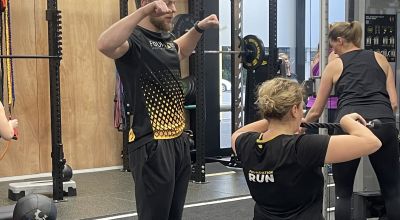The physical stress put on a young body during periods of rapid growth and also high levels of sport can be immense. It is not uncommon for children to be participating in up to 4 different sports at the same time and having multiple training sessions per day, often back-to-back. This stress is then amplified by adolescent rapid growth and hormonal changes that often coincide with a high sporting load. The result of this cumulative stress can result in vulnerability for young bodies. It is paramount that at this time they remain protected from overload and non-contact traumatic injury but also from growth associated issues.
Knee Pain:
Osgood-Schlatter Lesion:
This condition is extremely common in adolescents at the time of a growth spurt. It is usually associated with sports that involve lots of running and jumping, such as basketball, football and gymnastics. Pain is felt around the front of the knee, a couple of centimeters below the kneecap, on an area called the tibial tuberosity. There is almost always associated tightness of the surrounding muscles, especially the quadriceps. Osgood-Schlatters is a self-limiting condition that settles when the child has finished growing. Management includes ice, monitoring or adjusting training load, massage and correction of any biomechanical abnormalities.
Sinding-Larsen-Johansson Lesion:
This condition is very similar to Osgood-Schlatters, presenting with pain around the front of the knee. However, it affects the bottom edge of the knee cap. It is much less common than Osgood-Schlatters, but the same management principles apply.

Heel Pain:
Severs Lesion:
Heel pain is a common compliant in the skeletally immature athlete. The child will complain of activity related pain, and tenderness at the site of insertion of the Achilles tendon. There may be tightness of the calf, and restriction of ankle movement. Management consists of activity modification so that the child becomes pain-free. A heel raise may be inserted in the shoe, and biomechanical abnormalities are usually addressed. Massage of the calf is highly recommended. Symptoms usually settled within 6 to 12 months, but occasionally symptoms will persist for as long as two years.
Related posts

If you want faster recovery and long-term results, your rehab needs to look like the life you want to get back to.

Research shows that switching sports in the off-season is one of the best ways for 12–18-year-olds to boost performance, stay healthy, and keep sport fun

Here are a handful of reasons why integrating strength training into your running routine is a good idea








